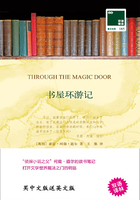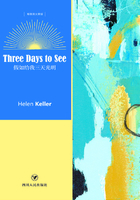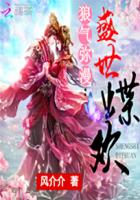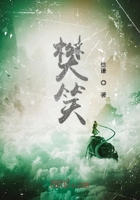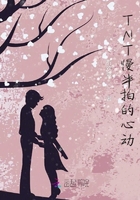In ancient India conventional mathematics termed Ganitam was known before the development of algebra. This is borne out by the name — Bijaganitam, which was given to the algebraic form of computation. Bijaganitam means the other mathematics (Bija means 'another'or'second'and Ganitam means mathematics).Some scholars have interpreted the term Bija to mean seed, symbolizing origin or beginning. And the inference that Bijaganitam was the original form of computation is derived. But whatever the origin of algebra, it is certain that this technique of computation originated in India and was current around 1500 years back.
But even in the area of Geometry, Indian mathematicians had their contribution. There was an area of mathematical applications called Rekha Ganita (Line Computation). The Sulva Sutras, which literally mean "Rule of the Chord" give geometrical methods of constructing altars and temples. The Buddhist Pagodas borrowed their plan of construction from the geometric grid of the Mandala used for constructing temples in India.
印度数学:代数中的比杰甘尼坦和几何中的鲁卡甘尼塔
在印度,数学源自于有大约4000年历史之久的吠陀文献,在公元前1000年至公元1000年之间,由印度数学家所写的各种数学论文首次阐明了零的概念、代数和运算法则的技巧以及平方根与立方根。
在古印度,代数发展之前的常规计算术语被叫做甘尼坦。这是由“比杰甘尼坦”这个名字而来,它给予了计算的代数形式。“比杰甘尼坦”意思是其他的数学(比杰意思是“另一个”或“第二”,甘尼坦意思是数学。)一些后世学者把“比杰”这个术语解释为种子,指其象征着起源或开始,那么就推论出比杰甘尼坦是源自计算的初始状态。但是无论怎样,代数的起源肯定是源自印度的某种计算技巧,它比当前流行的说法要早1500年左右。
即使在几何学上,印度数学仍然有它的贡献。有一个数学应用领域叫做鲁卡甘尼塔(线性计算)。苏瓦经典《绳法经》,字面意思就是“和音(弦)的规则”,它给予了建造祭坛和庙宇的模型。佛教借鉴了印度庙宇建筑的几何规格来建筑曼陀罗坛场。
Indian Medicine:The imperial physician Sravaka andSurgery expert Susruta
In medicine, the Atharva Veda recorded 77 kinds of diseases, and their symptomatic drugs. Of course, those records were mixed with witchcrafts. The most famous medical writings were Sravaka Samhita and Susruta Samhita. The two books are still valuable today.
According to legend, Sravaka is an imperial physician in Kaniska, and his book discussed the classification of disease and the system of diagnoses, and regarded nutrition,sleep and diet as the three elements for a healthy body. The book mentioned 500 different drugs. So it is known as the medical encyclopedia.
Susruta was younger than Sravaka. His book is more extensive. In addition to anatomy, physiology, pathology, he also studied as many as 1120 diseases, including internal medicine, surgery, obstetrics and pediatrics. It reached a very high level especially in the surgical operation. The book mentioned 120 kinds of surgical instruments, and the operation methods of removing cataract, hernia and bladder stones. There were up to 760 kinds of drugs in the book.
印度医学:御医舍罗迦和外科手术专家妙闻
在医学方面,古印度的《阿闼婆吠陀》记载了77种病症之名,并开出了对症的药方。当然,这些记载中也不乏夹杂着一些巫术迷信。最著名的医学著作是《舍罗迦本集》和《妙闻本集》,这两本书今天仍有实用价值。
相传,舍罗迦是迦腻色迦的御医,他的书探讨了疾病的分类和诊断体系,并把营养、睡眠与节食视为维护人体健康的三大要素。书中提到的药物有500种,故而被誉为医学百科全书。
妙闻稍晚于舍罗迦,他的书内容更为广泛,除解剖学、生理学、病理学外,还研究了内科、外科、妇产科和儿科病症达1120种,尤其是在外科手术上有相当高的水平。书中记有120种外科器具,并记有拔除白内障、疝气和膀胱结石等手术方法,药物多达760种。
The pure hymn“Raga”and the olddance“Natyam”
The base of the traditional music of India is"nature". It praises the relation between person and person, man and nature, and man and god. The melody of the four seasons are reflected in the traditional tune of "Raga" —according to legend, the ancient people gained inspiration from the sound of the birds and the voice of the burning branches in the forest, and created the first song of "Raga". The content of the song originated from the religious ceremony in North India. The song remains a style of a concise and pure hymn.
The Natyam is one of the oldest dance in India. It means "the art of dance" in Indian. In addition to its emphasis on dance rhythm, it also emphasizes that the accompaniment music must be melodious, composed by formal poetry and simple music. Being a ritual dance, it was initially by the devadasis in the temple. The key poses of the dance lie in maintaining the upper body straight, the legs half-bent, the knees apart, and the feet like a semi-open fan and all these can fully reflect the dancer's emotions.
纯洁的“拉格”歌和古老的婆罗多舞
印度传统音乐的基础正是“自然”,它歌颂人与人之间的关系、人与自然的关系以及人与神之间的关系,四季的旋律都在传统曲调“拉格”中得到体现。相传,古人从森林里小鸟的鸣叫和树枝燃烧的声音中获得灵感而创造了第一首“拉格”,歌曲的内容源于北印度的宗教仪式,这种歌曲保持了一种简洁、纯美的圣诗感觉。
印度最古老的舞蹈之一是婆罗多舞,它在印度语中的意思是“舞蹈的艺术”。婆罗多舞除了强调舞蹈的节奏感,还强调伴奏音乐必须悦耳动听并由庄重的诗歌和纯朴的音乐组成。该舞本是用于祭祀的舞蹈,最初由神庙舞女在庙宇里表演。这一舞蹈的动作关键在于保持上身的挺直,腿部半弯,双膝分开,而双脚则要像一把半开的扇子,使之充分体现舞者的情感。

